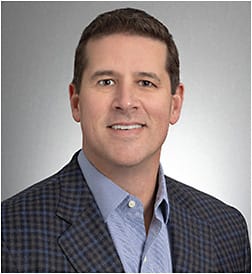
Shawn O’Neil is the chief commercial officer of ViaLase Inc., a clinical stage medical technology company located in Aliso Viejo, Calif. ViaLase’s lead product candidate is the ViaLuxe Laser System, a non-invasive, image-guided femtosecond laser treatment that is designed to reduce IOP. Mr. O’Neil has more than 27 years of experience in ophthalmology and optometry commercializing products in both large cap and start-up organizations.
Ophthalmology Management: ViaLase’s lead product candidate is the ViaLuxe Laser System for the treatment of glaucoma. How does it work, and where is it in the development cycle?
Shawn O’Neil: The ViaLuxe, which is in development and not regulatory cleared at this time, combines a femtosecond laser and micron-level, high-definition image guidance to deliver a non-invasive glaucoma treatment called femtosecond laser image-guided, high-precision trabeculotomy, or FLigHT. The ability to non-invasively create a conduit between Schlemm’s canal and the anterior chamber is an advantage unique to the FLigHT procedure. All currently available trabecular bypass approaches require opening the eye and thus, introduce complications associated with surgery.
The ViaLuxe houses three components — the ViaLens Patient Interface that non-invasively provides visualization and delivery of the femtosecond laser into the trabecular meshwork angle; the ViaVue Gonio Camera that provides a high-definition gonio view of complete structures of the angle in all four quadrants; and the ViaLuxe Laser that allows the doctor to deliver femtosecond laser pulses to precisely create channels without collateral damage to adjacent tissues.
OM: Can you discuss patient selection and whether this can be a first-line treatment?
SO: We would contend that the great unmet need in glaucoma is the opportunity to offer a non-invasive treatment to patients who are not ready for cataract surgery or have already had cataract surgery and are either unhappy or uncontrolled on medical therapy. That said, we’re studying the device in mild to moderate primary open angle glaucoma patients — that is going to be the main entry point for the technology. As we bring this to market and doctors have the opportunity to utilize this in patients, we believe they will be enthusiastic about a non-invasive approach that meets an unmet need for many categories of patient.
We know the current treatment paradigm presents challenges, such as patient compliance or adherence with topical therapy, or the risks and complications of incisional surgery or more advanced filtering procedures. MIGS has done a nice job of creating an opportunity at the time of cataract surgery but has not been broadly adopted outside of cataract surgery even in countries where the indication allows for that. We believe that’s because patients are still reluctant to go into surgery and have an invasive incisional procedure performed. We believe our technology will fuel the practice of non-invasive, interventional glaucoma, thus giving doctors an opportunity to intervene earlier with a potentially safe and effective procedure.
OM: ViaLase published 2-year outcomes of the first-in-human initial study of FLigHT treatment in patients with glaucoma. Can you give us an overview?
SO: Our first in-human study was published in Ophthalmology Science. The study followed the patients out to 24 months, and the results demonstrated that there were no reported serious adverse events at any time point during the study protocol. At the same time, the investigators were observing IOP measurements at each of the time points. Although it was not powered to be an efficacy study, a 34.6% reduction in IOP from baseline to 24-months was observed. We are really encouraged by these findings and look forward to demonstrating the efficacy of this procedure in the ongoing randomized controlled trial. ViaLase is preparing for registration of both FDA 510k clearance and CE Mark and subsequent commercial launch.
We’re excited about bringing the ViaLuxe to market for glaucoma patients and will continue to share our progress as we continue down our clinical and regulatory pathway. OM








